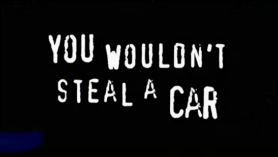After writing about the digital advertising grift yesterday, I got some really good followup questions regarding agencies using data during election campaigns and the Brexit referendum. Weren’t Russia and Cambridge Analytica and all those bad-faith actors using microtargeted online content to shift elections in the direction of their guy?
There was certainly manipulation going on. But the significance of microtargeting was not how the sorcery happened.
Consultancy firms like Cambridge Analytica can mostly be categorised as companies whose product is that everyone thinks they could spy on you, using your social media data alone. They don’t actually do this. Even in the data scandal, the profiles that Cambridge Analytica had constructed were built using personality quizzes and a hefty dollop of pseudopsychology. They then extrapolated this to other users with absolutely no evidence that any of these segments held up. It was lucrative and it sounded very fancy, and a lot of the worst people in the world paid good money for this.
Cambridge Analytica’s brand is cartoonish villainy, and it is very popular among cartoonish villains. They were paid vast sums to run microtargeted ads based on their clever profiles they’d built up. In order to do this, they’d have had to translate their clever profiles into the demographic details which are used to target ads.
So ultimately, what they were doing after all this was… “hey let’s show this ad about how Brexit will save the NHS to 55 year old dental receptionists in Stoke-on-Trent”. In other words, the same way anyone else targets ads, despite the science-y veneer.
How to actually steal an election using segmentation
Segmentation is a great buzzword for sorting people into categories, and its importance is wildly overstated in order to sell tools for audience analysis. Nevertheless, it is helpful, when stealing an election, to segment your audience into three groups. You don’t even need to do much analysis on these groups: two out of the three will reveal themselves pretty quickly.
The three segments required for stealing an election are: people who are voting for your guy anyway; people who will never in a million years vote for your guy; and people who are on the fence.
You don’t need to microtarget these audiences in any way; in fact, you need to target all of them. You need a message which resonates with the people who will vote for your guy; make the people who will never in a million years vote for your guy object to the point of insufferability; and that the thing which is most noticed by swing voters is the insufferability of the second category.
A good example of this is Brexit. Pro-Brexit messaging was incoherent, but resonated in positioning the anti-Brexit advocates as elite and out of touch. Unfortunately for the most prominent anti-Brexit voices, they were pretty out of touch, and reacted with complete insufferability, and continued to be patronising, insufferable, snotty, cliquey and generally awful, until the swing voters were sufficiently icked out by this behaviour. I very grudgingly voted Remain, but considered appending my ballot with a short essay as to how this vote should not be counted as an endorsement of the Remain campaign.
Why use microtargeting, when you can just wind your rivals up to the point of being so fucking annoying that they become an electoral bonerkill?
You can apply this to most elections. There’s a side that’s awful, and a side that, by positioning, appears less awful. The swing voters will probably come down on the lesser of two awfuls. It’s a tale as old as time, and it works. Also, it doesn’t require any real data analysis, you just have to make the other side look worse.
So what are they actually doing to steal an election?
We actually know a lot about how the sausage was made with Cambridge Analytica, because their CEO was caught on camera talking about how they stole elections. Despite the major data breaches, Cambridge Analytica favoured doing things the old-fashioned way: bribery, honey traps, information gathering using sex workers, entrapment. Even the unusually candid CEO in question couldn’t provide evidence that they’d used social media data to steal the 2016 US election in his bragging – he said it was “self-destructing”.
The old dark arts are tried and tested, and these are what have been so successful at stealing elections in recent years. It’s time to take off the mask and do a Scooby Doo reveal of the real villain, hiding underneath the concerns about digital microtargeting…
It was journalists all along.
In the 2016 US election, Donald Trump received more media coverage than any other runner in the race. In combination with this, Hillary Clinton got some coverage, and it was pretty much all about the emails scandal. Nigel Farage’s stupid frog face was all over the news, all the time during the Brexit referendum. And don’t even get me started on the absolute state of the four year campaign of hit jobs on Jeremy Corbyn.
Mass media is more than sufficient to tip the scales. You just need to throw in a good wedge, and this is easily done the old-fashioned way: by throwing shit at the wall and seeing what sticks, then watching everyone fight each other. Sure, you can supplement the fight with some bots, if you want, but the humans will be more than sufficient.
But we need a bogeyman here, especially as journalism is getting markedly worse and worse. And so the bogeyman can be social media witchcraft. It’s not the carefully-curated PR attacks that are the villain, it’s Facebook ads, who know exactly when you’re constipated and will trick you into voting Lib Dem while you’re on the toilet.
_
Enjoyed what you read? Consider becoming a Patron or leave a tip




